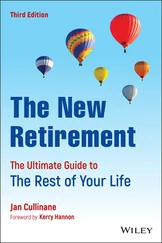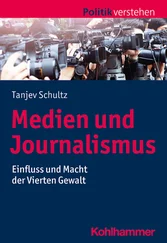Employees formed the IBM Employee Benefits Action Coalition, which began to complain to the Equal Employment Opportunity Commission (EEOC), the IRS, Congress, and anyone else who would listen. August is usually a slow month that finds lawmakers at state fairs and pie-judging contests, but that year lawmakers in areas with large IBM populations were besieged in town hall meetings by angry IBM constituents. The largest was in Vermont, where eight hundred people jammed into an art center in Winooski for a meeting held by then Congressman Bernie Sanders. Sanders, a feisty independent, thought the IBM employees, who were asking IBM to let them remain in the old plan, had a point. “If converting to a new pension program doesn’t save a company any money, as some companies say, it should not be too expensive for companies to offer all of their employees the choice to remain in their original pension plan.”
A Senate committee decided to hold a hearing on whether employers were adequately disclosing pension cuts to employees. During the session, PricewaterhouseCoopers, a leading benefits consultant and accounting firm, circulated a briefing memo to lawmakers and the media stating that recent newspaper articles “leave readers with the unsubstantiated conclusion that corporate America uses cash-balance plans to mask significant reductions in pension benefits and costs.” The memo also noted, “It is unfair to imply that employers chose to switch to cash-balance plans in order to mask benefit reductions.”
But the impact of the consultants’ briefing material was extinguished when a witness at the hearing played an audiotape of William Torrie, a Pricewaterhouse actuary, telling a Society of Actuaries meeting the previous year that “converting to a cash-balance plan does have an advantage, as it masks a lot of the changes…. There is very little comparison that can be done between the two plans,” he said.
The witness played other audiotapes of discussions among actuaries made in the 1990s at other professional conferences. “If you decide your plan’s too rich, and you want to cut back, and you only want to do it for new hires, changing to a totally different type of plan will let you do that without being obvious about it,” said Norman Clausen, a principal at Kwasha Lipton, which had become a unit of PricewaterhouseCoopers. An article about the tapes’ contents had earlier appeared in The Wall Street Journal , and then NBC got hold of the tapes and played excerpts on the Nightly News.
Gerstner and other top managers were caught flat-footed by the backlash, and before long they were staging a partial retreat. The company agreed to allow 35,000 older employees to stay in the old pension, but it still saved plenty of money. The cash-balance plan boosted IBM’s pretax income in 1999 by $184 million, or 6 percent.
Despite the negative attention its pension changes were getting, IBM continued to devise sly ways to cut benefits. One was to pay them out as lump sums. Companies championed the lump-sum feature as something that made cash balance and other hybrid pensions better for “a more mobile workforce.” Because employees change jobs more frequently than they did in the past, employers maintained, they need a portable pension, like a 401(k), that they can cash out when they leave and roll into an IRA (or blow on a bass boat or a Taco Bell franchise).
One flaw in this construct is that employers have always been free to provide lump sums from traditional pensions; lump sums aren’t intrinsic to cash-balance plans. And in any case, most employers automatically distribute pensions in lump sums when the pensions are worth $5,000 or less, to spare themselves the trouble of keeping track of them over many years.
Watson Wyatt, ever the innovator, offered employers the Single Payment Optimizer Tool (SPOT), a software program that enabled employers “to compare the cost of lump-sum cash outs to the costs of keeping employees on the retirement rolls.” “Often, lump sums are the most cost-effective form of pension payout because of lower administrative costs over time,” the accompanying marketing material says. It went on to note that sometimes employers are better off not offering lump sums if they can earn a higher rate of return on the assets than they will have to pay out to employees, adding that “SPOT can tell an employer when it is more cost effective to pay a lump sum and when an annuity is best…. With organizations scrutinizing every expense for bottom-line impact, every bit of savings helps.” So much for the concern about providing lump sums to help more-mobile workers build retirement benefits.
Another fallacy is that workers are more mobile. Younger workers are, indeed, more mobile—Bureau of Labor Statistics data show that they tend to change jobs seven times before they’re thirty-two. But pensions, including cash-balance plans, require five years on the job before one vests, so few younger, more-mobile workers remain in place long enough to collect a pension at all.
Older workers, by contrast, aren’t mobile at all (at least not voluntarily). As IBM and other employers were painfully aware, older workers tend to stay on the job until they lock in a bigger pension. That was the portion of the workforce IBM and other companies wanted to dislodge. Lump sums offered a twofold solution. For one thing, they were an enormous carrot to get people out the door. Companies knew that employees found lump sums irresistible. “Choosey Employees Choose Lump Sums!” was the title of one of Watson Wyatt’s surveys.
The carrot was especially effective when presented along with a stick: As part of their retirement “windows,” numerous companies told employees that if they agreed to leave now, they could take a pension as a lump sum. If not, they could take their chances and get laid off next year and have only the option of a monthly check in retirement. Another benefit of lump sums—from employers’ perspective—is that they shift longevity risk to retirees. Employers have been acutely aware that life spans are increasing, which explains why companies with a large percentage of women and white-collar professionals have been eager to provide lump sums. [6] Employers began using unisex mortality tables in the 1980s, which has been disadvantageous for women taking lump sums rather than annuities.
If the pension is based on a life expectancy of seventy-eight, then an engineer who lives to age ninety will have drawn a pension for roughly twelve years longer than the amount the lump sum would have been based on.
By contrast, coal miners and factory workers tend to have shorter life spans than the national average, so it’s no surprise that they are less likely to have a lump-sum option. General Motors, for instance, doesn’t allow most of its factory workers to take a lump-sum payout. But it does allow its white-collar workers to take a lump sum if they leave before retirement age. [7] In recent years, some employers have argued that their workers are actually dying younger; this would enable employers to contribute less to their pension plans. Lawmakers bought it: The Pension Protection Act of 2006 allows large companies to use their own mortality assumptions when they figure out how much money to contribute to pension plans. Lower life spans mean lower contributions.
Government data show a strong correlation between longevity and payout options: Bureau of Labor statistics show that about one-third of blue-collar workers have a lump-sum option in their pension plans, while 60 percent of white-collar workers do.
This concept is understood by noncorporate pension managers as well: The Marine Engineers’ Beneficial Association, which covers ship engineers and deck officers, requires workers to take a medical exam before being eligible for a lump sum. Retirees in good health can take a lump sum, but those in poor health may not be allowed to.
Читать дальше












